mission
IMPACT
Productivity up to four times greater than that of corn while consuming up to ten times less water.
We have the best technologies to spread new products for human consumption, develop livestock farming where it is currently not sustainable, improve the environment, locally mitigating the impact of climate change.
We make it possible to produce clean energy at an affordable price, distributing income in poor areas. With our constant commitment to quality and innovation, we expect to play an important role in expanding overall well-being.

-7000t
CO2 emissions
Opuntia Ficus Indica (OFI) is an extremely versatile rustic perennial plant with important properties. It takes CO2 from the atmosphere and grows biomass on land where the yield in other types of crops would be very low. This property makes OFI an extremely useful plant for greening and reforestation policies in various areas of the planet where other crops are unable to thrive, and therefore increases the surface area that can be used to absorb CO2 from the atmosphere, a very useful practice for balancing anthropogenic CO2 emissions.

+200%
soil fertility
Agricultural soil is a vital natural resource for humans, but it is also a scarce, non-renewable resource, which we are degrading at an alarming rate. The phenomenon of soil erosion and loss of fertility occurs just as the population on the planet increases and consumption increases, adding pressure on ecosystems.
Every year 10-12 million hectares of agricultural land are lost (corresponding to 100/120 thousand KM2, corresponding to a country like Bulgaria) due to erosive phenomena, worsening the current situation with further famines, emigration and deforestation to obtain new land for cultivate. Wakonda’s approach allows us to recover degraded soil in semi-arid areas of the planet, making land economically productive that is tending to be abandoned due to a progressive decrease in income from traditional crops.

2.500,000 kWh
clean energy produced
(Corresponding to the consumption of over 1000 family homes)
Biogas production generates continuously renewable clean energy and, as a by-product, a fertilizer and soil improver. It is this by-product that closes the Wakonda process in a circular manner, returning carbon and other nutrients to the agricultural soil which improve its quality and productivity, while also reducing emissions relating to the production of synthetic fertilizers which are responsible for approximately 2% of global emissions and 10% of total agricultural emissions. In total, emissions related to agricultural production represent 18% of global emissions. Reducing emissions from the sector without also reducing agricultural production is the key to avoiding the risk of food crises, a challenge within a challenge in which Wakonda believes it can make a substantial contribution.

Between 60% and 90%
less water consumption
The production of agricultural commodities for human consumption or as animal fodder has a significant water footprint and creates pressure on the use of a factor that is becoming increasingly scarce: water. The rational use of water resources is one of the challenges that humanity has always faced in its evolution and which today and in the near future it must reinterpret to minimize the increasingly evident effects of climate change. In Wakonda, the issue of water consumption in relation to agricultural production was studied in depth in developing both the varieties of Opuntia Ficus Indica (OFI) to be cultivated intensively and the most suitable cultivation techniques, to further streamline the use of waterfall. The OFI cultivated by Wakonda is one of the most efficient plants in the use of water, which allows for large biomass production and great productivity per hectare. Wakonda’s target is to produce 3-4 times the amount of dry biomass of a corn plant (15-20 tons DM/hectare) per hectare per year, with a need for 5-10 times less water per unit of dry biomass produced compared to corn.

Bioremediation
Opuntia Ficus Indica is a plant that also has excellent properties for the phytoremediation of soils polluted by heavy metals and hydrocarbons. Compared to other plants such as the sunflower, Opuntia sequesters fewer metals or hydrocarbons in its biomass, but it is able to grow so much that the absolute quantity of metals or hydrocarbons extracted per hectare of land is greater. This property, combined with the fact that it can also grow in semi-arid areas where plant options for phytoremediation are limited, means that it can be used to remediate contaminated areas in southern Europe as well as in Africa, the Middle East and all semi-arid areas of the planet. . Furthermore, most phytoremediation projects have a high cost as the biomass grown on contaminated land is not usable and must be disposed of in special landfills. With the system developed by Wakonda, however, it is possible to recover the plant’s energy through biogas and then concentrate the pollutants present in the digestate to minimize the quantity of polluted residue to be disposed of in specialized landfills.

Soil regeneration
Agricultural land is a non-renewable resource (at least on a human time scale). Today the soils are under great pressure: on the one hand they must increase productivity per hectare, to be able to feed the increased world population, on the other they must do this increase with new agronomic practices capable of reducing the soil degradation. All this while with conventional agriculture we are losing an area equivalent to Bulgaria every year due to erosion and soil degradation. Our Biorefinery allows us to be present on already degraded soils, in semi-arid areas and with little water available and produce large quantities of biomass in a sustainable way. Not only. Our processes allow us to increase the carbon content in the soil, increase microbial life and vitality, and consequently regenerate the soil. Our goal is to implement this virtuous cycle in countries and areas of the planet where systems are under pressure and, after having made the soil fertile again, uproot the plants and grow new plants on the regenerated soil, moving to the next plot of land to be regenerated. With this innovative concept we transform land regeneration from a mere cost to a system capable of paying for itself even in the short term, thus accelerating the implementation of soil regeneration.
